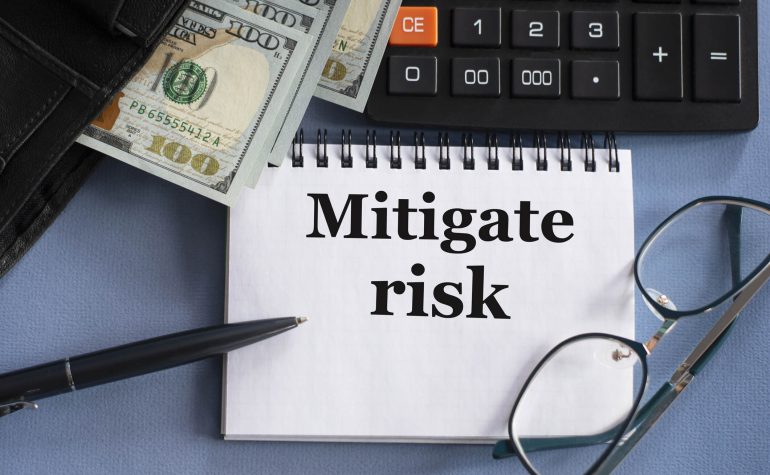
By alphacardprocess June 15, 2024
In today’s dynamic business environment, certain industries are inherently more prone to risks than others. These high-risk businesses operate in sectors such as finance, healthcare, construction, and aviation, where the potential for financial loss, legal liabilities, and reputational damage is significantly higher.
Managing and mitigating risks in such industries requires a comprehensive approach that encompasses identifying and assessing risks, developing a risk management plan, implementing risk mitigation measures, building a resilient organizational culture, ensuring effective communication and reporting, leveraging technology and data analytics, considering compliance and regulatory requirements, and preparing for crises and business continuity. This article aims to provide a detailed guide on how to manage and mitigate risk in high-risk businesses.
Identifying and Assessing Risks: A Comprehensive Approach
The first step in managing and mitigating risks in high-risk businesses is to identify and assess the potential risks that the organization may face. This involves conducting a comprehensive risk assessment that considers both internal and external factors. Internal risks may include operational inefficiencies, inadequate internal controls, and employee misconduct, while external risks may include economic downturns, regulatory changes, and natural disasters.
To effectively identify and assess risks, organizations can utilize various tools and techniques. One such tool is a risk register, which is a document that lists all potential risks along with their likelihood and impact. Additionally, organizations can conduct risk workshops and brainstorming sessions involving key stakeholders to gather insights and perspectives on potential risks.
Once risks are identified, they need to be assessed in terms of their likelihood and potential impact. This can be done through qualitative and quantitative risk assessments. Qualitative assessments involve assigning subjective ratings to risks based on their likelihood and impact, while quantitative assessments involve assigning numerical values to risks based on historical data and statistical analysis.
Developing a Risk Management Plan: Key Components and Strategies
After identifying and assessing risks, the next step is to develop a risk management plan. This plan outlines the strategies and actions that the organization will undertake to manage and mitigate risks effectively. A comprehensive risk management plan typically includes the following key components:
- Risk Appetite and Tolerance: Organizations need to define their risk appetite and tolerance levels, which determine the amount of risk they are willing to accept. This helps in setting risk management objectives and aligning risk management activities with the organization’s overall goals.
- Risk Identification and Assessment: The risk management plan should include a detailed description of the risks identified and assessed during the initial phase. This ensures that all potential risks are considered and addressed in the plan.
- Risk Mitigation Strategies: The plan should outline the strategies and measures that will be implemented to mitigate identified risks. These strategies may include risk avoidance, risk transfer, risk reduction, and risk acceptance.
- Risk Monitoring and Control: The plan should specify the mechanisms and processes that will be put in place to monitor and control risks on an ongoing basis. This may involve regular risk assessments, performance indicators, and reporting mechanisms.
- Risk Communication and Training: Effective communication and training are crucial for successful risk management. The plan should outline how risks will be communicated to relevant stakeholders and how employees will be trained to identify and manage risks.
Implementing Risk Mitigation Measures: Best Practices and Techniques
Once the risk management plan is developed, the next step is to implement risk mitigation measures. This involves putting in place the strategies and actions outlined in the plan to reduce the likelihood and impact of identified risks. Here are some best practices and techniques for implementing risk mitigation measures:
- Establishing Internal Controls: Internal controls are policies and procedures that organizations put in place to ensure the reliability of financial reporting, compliance with laws and regulations, and the effectiveness and efficiency of operations. Implementing strong internal controls can help mitigate risks related to fraud, errors, and non-compliance.
- Insurance Coverage: High-risk businesses should consider obtaining appropriate insurance coverage to transfer some of the risks to insurance companies. This can provide financial protection in the event of unforeseen events such as accidents, natural disasters, or lawsuits.
- Business Continuity Planning: Developing a business continuity plan is essential for high-risk businesses to ensure that critical operations can continue in the event of a disruption. This involves identifying key business processes, establishing backup systems and alternative locations, and regularly testing and updating the plan.
- Supplier and Vendor Management: High-risk businesses often rely on suppliers and vendors for critical inputs. Implementing robust supplier and vendor management processes can help mitigate risks related to supply chain disruptions, quality issues, and non-compliance.
Building a Resilient Organizational Culture: Fostering Risk Awareness and Accountability
Building a resilient organizational culture is crucial for effectively managing and mitigating risks in high-risk businesses. This involves fostering risk awareness and accountability among employees at all levels of the organization. Here are some strategies to build a resilient organizational culture:
- Leadership Commitment: Leaders should demonstrate a strong commitment to risk management by setting the tone at the top and leading by example. This includes actively participating in risk management activities, promoting open communication, and holding employees accountable for managing risks.
- Employee Training and Education: Providing regular training and education on risk management is essential to ensure that employees understand the importance of risk management and are equipped with the necessary knowledge and skills to identify and manage risks.
- Encouraging Risk Reporting: Organizations should establish mechanisms to encourage employees to report risks and near-miss incidents without fear of retaliation. This can be done through anonymous reporting channels, regular risk reporting meetings, and recognition programs for proactive risk management.
- Performance Management: Incorporating risk management objectives and metrics into performance management systems can help reinforce the importance of risk management and hold employees accountable for managing risks effectively.
Effective Communication and Reporting: Ensuring Transparency and Timely Action
Effective communication and reporting are critical for successful risk management in high-risk businesses. This involves ensuring that relevant stakeholders are informed about risks, their potential impact, and the actions being taken to manage them. Here are some strategies for effective communication and reporting:
- Stakeholder Engagement: Organizations should identify and engage relevant stakeholders, including employees, customers, suppliers, regulators, and investors, in risk management activities. This can be done through regular communication channels such as meetings, newsletters, and social media platforms.
- Transparent Reporting: Organizations should establish clear and transparent reporting mechanisms to communicate risks and risk management activities to stakeholders. This may include regular risk reports, dashboards, and key risk indicators.
- Timely Action: It is essential to take timely action to address identified risks. This requires establishing clear escalation and decision-making processes to ensure that risks are addressed promptly and effectively.
Leveraging Technology and Data Analytics: Enhancing Risk Management Capabilities
In today’s digital age, high-risk businesses can leverage technology and data analytics to enhance their risk management capabilities. Here are some ways technology can be used to manage and mitigate risks:
- Risk Assessment Tools: There are various software tools available that can help organizations conduct risk assessments more efficiently and accurately. These tools automate the process of identifying and assessing risks, allowing organizations to analyze large amounts of data and generate comprehensive risk profiles.
- Data Analytics: High-risk businesses can use data analytics techniques to analyze large datasets and identify patterns, trends, and anomalies that may indicate potential risks. This can help organizations proactively identify and address risks before they escalate.
- Monitoring and Surveillance Systems: Implementing monitoring and surveillance systems can help organizations detect and prevent risks in real-time. For example, financial institutions can use fraud detection systems to identify suspicious transactions, while manufacturing companies can use sensor-based systems to monitor equipment performance and detect potential failures.
Compliance and Regulatory Considerations: Navigating the Legal Landscape
High-risk businesses operate in industries that are subject to various compliance and regulatory requirements. Navigating the legal landscape is crucial to ensure that the organization remains compliant and avoids legal liabilities. Here are some considerations for compliance and regulatory risk management:
- Regulatory Compliance Framework: Organizations should establish a robust regulatory compliance framework that includes policies, procedures, and controls to ensure compliance with applicable laws and regulations. This framework should be regularly reviewed and updated to reflect changes in the regulatory environment.
- Regulatory Monitoring: High-risk businesses should actively monitor changes in the regulatory landscape to ensure timely compliance. This can be done through regular engagement with regulatory authorities, participation in industry associations, and monitoring of regulatory publications and updates.
- Compliance Training: Providing regular compliance training to employees is essential to ensure that they understand their obligations and responsibilities under applicable laws and regulations. This training should cover topics such as anti-money laundering, data privacy, and consumer protection.
Crisis Management and Business Continuity: Preparing for the Unexpected
High-risk businesses are more susceptible to crises and disruptions that can have severe consequences if not managed effectively. Therefore, it is crucial to have a robust crisis management and business continuity plan in place. Here are some key considerations for crisis management and business continuity:
- Crisis Management Plan: Organizations should develop a comprehensive crisis management plan that outlines the roles, responsibilities, and actions to be taken during a crisis. This plan should include protocols for communication, decision-making, and coordination with relevant stakeholders.
- Business Impact Analysis: Conducting a business impact analysis helps organizations identify critical business processes, dependencies, and vulnerabilities. This analysis enables organizations to prioritize resources and develop strategies to minimize the impact of disruptions.
- Testing and Exercising: Regular testing and exercising of the crisis management and business continuity plan is essential to ensure its effectiveness. This can be done through tabletop exercises, simulations, and drills that involve key stakeholders.
FAQs
Q.1: What are high-risk businesses?
Answer: High-risk businesses operate in industries where the potential for financial loss, legal liabilities, and reputational damage is significantly higher. These industries include finance, healthcare, construction, and aviation, among others.
Q.2: Why is risk management important in high-risk businesses?
Answer: Risk management is crucial in high-risk businesses to identify, assess, and mitigate potential risks. Effective risk management helps organizations protect their assets, ensure compliance with laws and regulations, and maintain their reputation and competitive advantage.
Q.3: What are some common risks in high-risk businesses?
Answer: Common risks in high-risk businesses include operational inefficiencies, regulatory non-compliance, financial fraud, cybersecurity threats, natural disasters, and reputational damage.
Q.4: How can technology help in risk management?
Answer: Technology can help high-risk businesses enhance their risk management capabilities by automating risk assessments, analyzing large datasets, monitoring and detecting risks in real-time, and improving compliance monitoring and reporting.
Q.5: What is the role of leadership in risk management?
Answer: Leadership plays a crucial role in risk management by setting the tone at the top, demonstrating a commitment to risk management, and fostering a resilient organizational culture that promotes risk awareness and accountability.
Conclusion
Managing and mitigating risks in high-risk businesses requires a comprehensive approach that encompasses identifying and assessing risks, developing a risk management plan, implementing risk mitigation measures, building a resilient organizational culture, ensuring effective communication and reporting, leveraging technology and data analytics, considering compliance and regulatory requirements, and preparing for crises and business continuity. By following the strategies and best practices outlined in this guide, high-risk businesses can effectively manage and mitigate risks, protect their assets, and ensure long-term success in their respective industries.
